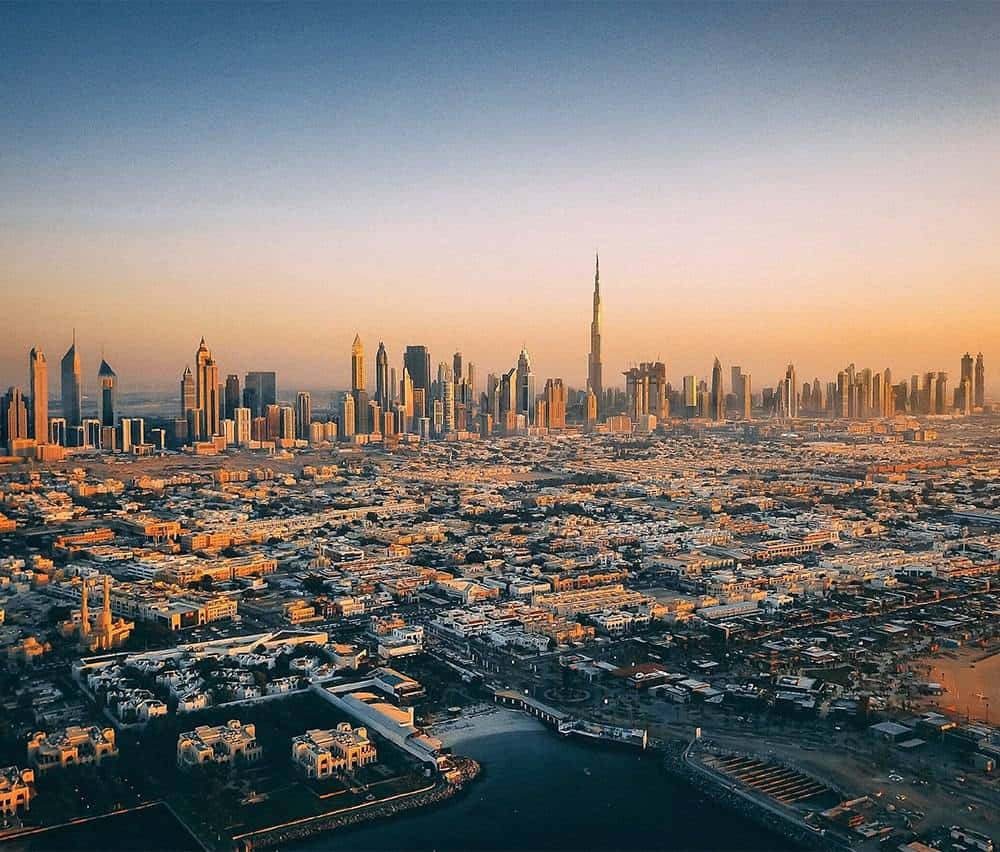Dubai, UAE — Residential properties in the UAE remain a top priority for international real estate investors. Experts attribute the main reasons for the increase in demand to the government’s numerous initiatives and the high level of income.
According to consulting firm reports, all segments of the property market are growing. This is even though the real estate market has faced challenges in recent months, such as inflation.
A new report from JLL real estate agency in Dubai, revealed that the UAE continues to witness a positive trajectory across the residential, office, retail, and hospitality segments in the third quarter of this year.
Overall, the average residential prices in Q3 grew by 9 percent year-on-year in Dubai, while average rental rates saw a 25 percent year-on-year increase, with both sales and rentals being bolstered by stronger demand and increased buyer activity.
Meanwhile, sale prices in the capital grew by 4% year-on-year, while average rents rose by 2% year-on-year. Abu Dhabi is seeing increased demand for new developments located within investment zones – especially for townhouses and villas.
Also Read Major Saudi Arabian cities witness strong demand for residential, office real estate
Across the UAE, price growth is being fueled by investor and end-user demand. Off-plan sales are high, while secondary market sales are also improving, considering increasing yields.
The quarterly report suggests around 6,600 residential units were handed over in Dubai in Q3, raising total stock to 672,000 units, while an additional 20,000 units are scheduled for completion by year end. In Abu Dhabi, approximately 1,900 units were delivered in Q3, bringing the Emirate’s total dwellings to roughly 278,000 units. The research suggests the capital plans another 2,000 units – mostly within master-planned communities – to be completed by year end.
Office Space
Since there were no new office completions in Q3, Dubai’s office stock remained unchanged at 9.1 million square meters.
In Abu Dhabi, the delivery of an additional 63,000 square meters. of new space pushed up the city’s office stock to 3.93 million square meters. Whilst no new supply is planned to be delivered in the capital in the final quarter of 2022, around 53,000 square meters is scheduled to be completed in Dubai.
Over the past nine months, robust demand for good quality office space has driven down vacancy rates across both cities in turn applying upward pressure on rents. In Q3, Dubai’s Grade A CBD rents saw double-digit growth to reach an average of AED 2,084 per square meters per annum and Abu Dhabi saw a 9% rise to AED 1,750 per square meters per annum.
New enquires saw a marginal dip during the summer period but remained healthy overall in Dubai. The bulk of enquiries in Abu Dhabi were for co-working and serviced office spaces, demonstrating that hybrid working is here to stay.
Retail
While the third quarter saw no new retail projects completed in either Dubai or Abu Dhabi, the sector’s Q4 activity looks set to welcome around 154,000 sq. m. of new retail space in Dubai and 197,000 sq. m. in the capital. With ample supply available for retailers to choose from, potential tenants are being more strategic in selecting their locations for new outlets.
A moderate increase in retail rents (3% in Dubai and 5% in Abu Dhabi) reflects a sector benefitting from improving levels of consumer confidence.
While the easing in restrictions is helping footfall to recover, mall owners are recognizing the importance of differentiating their offerings in a landscape where there is ample supply. In view of greater competition, malls are introducing more experiential retail concepts and are seeking to have a greater variety of outlets for visitors to their properties.
JLL anticipates more developers and landlords looking to bring in homegrown concepts – particularly in the F&B segment – as they have the appeal of offering experiences tailored to local needs, while also being relatively adaptable.
Hospitality
Hotels are likely to continue to perform well in the coming months, benefitting from upcoming events such as Formula 1, NBA Games and UFC 280, as well as the FIFA World Cup in Qatar, which is anticipated to have spillover effects for this market.
Dubai gained 1,000 keys in Q3, pushing up the city’s total hotel stock to 146,000 rooms. It is anticipated that the last quarter of the year will see the addition of 6,000 keys. No new hotel room stock was added in the third quarter in Abu Dhabi, but an additional 600 keys are expected to come on stream in the capital by year end.
Although summer is the low season for tourism in the UAE, the latest figures, nevertheless, demonstrate the sector’s rapid recovery following the COVID-19 pandemic.
Dubai’s Department of Economy and Tourism suggests the Emirate received around 2.95 million overnight visitors between June and August 2022, a significant jump compared to the 1.17 million recorded for the same period last year. Abu Dhabi witnessed a 24% increase in overnight visitors to 910,000, according to DCT Abu Dhabi.
While luxury and beachfront properties have been performing well, the pick-up in tourism is now also benefitting the mid- to low- segments by capturing demand from source markets that have traditionally supported these categories of hotels.
Dubai’s occupancy levels reached 70 percent between January and August 2022, a notable jump compared to the same period in 2021 (58%). Average daily rate (ADR) reached US$181 and revenue per available room (RevPAR) surged to US$ 127. In Abu Dhabi, occupancy levels reached 68%, compared to 63% last year, while ADR and RevPAR rose to US$105 and US$71, respectively.








